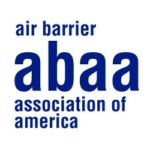Member Spotlight: Joseph St. Germain
The Air Barrier Association of America (ABAA) dives inside the career of Joseph St. Germain, Project Manager and Building Envelope Specialist for Wessling Architects in Quincy, MA. In this feature interview, learn what made him become an ABAA member, what led him on his career path, and get his perspective on the future of the air barrier industry.

Joseph St. Germain
Joseph St. Germain is a Building Envelope Specialist. Joseph has decades of experience in the industry, first in construction and then in building envelope consulting. He has worked on various projects around the country that include both new and existing buildings. He first became a licensed air barrier field auditor for ABAA in 2005 and has been an auditor for years. He is an Accredited Building Enclosure Commissioning Service provider (BECxP) and is a member of the International institute of Building Enclosure Consultants (IIBEC), Building Enclosure Technology and Environment Council (BETEC) of the National Institute of Building Sciences (NIBS) and Construction Specifications Institute (CSI).
Name: Joseph St. Germain
Title: Project Manager/ Building Envelope Specialist
Firm: Wessling Architects
City: Quincy, MA
What was the path to your career — how and why did you pursue a profession as a Building Envelope Specialist?
A: I was born into a family of contractors, and spent most weekends and summers working in the family business. I started out as a laborer and worked my way up. Eventually my path led me to the A/E industry, where I caught the bug for the building envelope field, which I find to be very rewarding.
Is there anything that you believe everyone in this industry should be working towards?
A: Overall, the construction industry – including contractors, designers and owners – are becoming more savvy as it relates to delivering a complete and fully functional building to the Owner. But I believe that there is much to improve regarding the overall saturation of knowledge in the industry concerning high quality and high performance building enclosures. There is still much progress to be made, but we are on the right track.
What role have peers, mentors, or advisors played in your career?
A: I’ve had the great opportunity to learn from some of the best and most experienced in the industry throughout my career, and the ability to pick their brains to build on my experiences and knowledge has been tremendous. They have been a very important part of my growth over the years, and continue to be.
What led you to become an ABAA member?
A: I became an Auditor for ABAA back in 2005 and have enjoyed many years in that role. Becoming a member has built on that and enhanced my continuing relationship with ABAA.
Are you involved in any ABAA committees? Do you have any ABAA certifications?
A: I am a licensed ABAA Auditor that performs Field Audits. I am not currently involved in an ABAA committee, although I would like to get involved in the near future.
How long have you been in the industry?
A: I’ve been in construction, mostly envelope related work, since I was a kid in the 1980’s. I transitioned into the designer/consultant side of the business in the early 2000’s.
What major changes have you seen?
A: The attention paid to air barriers and the design and construction of the building enclosure in general over the last couple decades have improved significantly. Changes in code have been positive in that regard and the development of new materials and systems have pushed the performance criteria forward.
What traits or skills do you think are necessary to be able to succeed in your industry?
A: Being able to visualize a design and break it down to it’s basic systems and understand how these systems work and come together during construction to make a complete high performance building enclosure is critical. Understanding constructability and the challenges contractors face onsite is key to knowing how a design can go from drawings to being built in the real world as intended.
Do you have any advice for anyone starting out in your field?
A: Start with the fundamentals of the building enclosure and build from there. Don’t be afraid to ask for help from senior staff and your peers – you will find that most wish to enable others in their careers. The only questions that go unanswered are the ones that are not asked. Pick brains and try to be a sponge. Each person has their own strengths and expertise to share. Keep in mind that the most senior members of the industry typically have the most to share and they can have invaluable insights for those starting out, especially regarding lessons learned.
How much demand do you think there is for people in your profession?
A: Building enclosure consulting has been a growing field for many years due the specific expertise we offer, but also because the general construction industry has expanded to include more of it as a prerequisite or due to the desire for improvements in the overall industry. Building enclosure commissioning and LEED have helped to drive this growth, but changes in code continue to be made to make it more of a necessary component in successfully delivering a high performance building to the Owner.
What do you think the industry will look like in five or ten year’s time?
A: I believe that the knowledge and understanding of the importance of the building enclosure to the overall performance and health of the building and it’s occupants will continue to increase. The awareness of this critical relationship between the building enclosure and the overall building will be enhanced over time and will result in buildings being delivered more efficiently and with effectively higher quality. The subsequent expectations for future buildings beyond that will be even higher.
